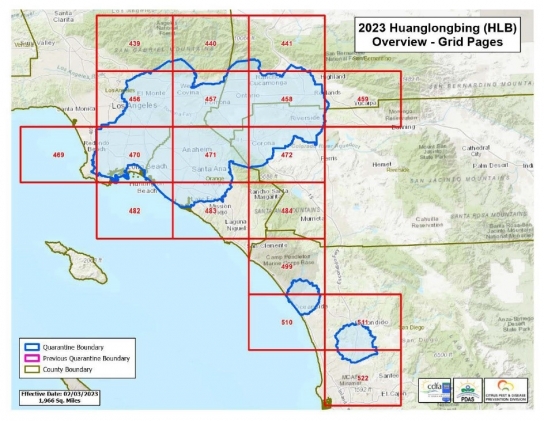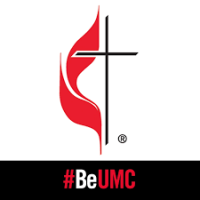 East County News Service
East County News Service
County News Service contributed to this report
Photo: Asian citrus psyllids, which can carry HLB, a disease deadly to citrus trees.
February 8, 2023 (Rancho Bernardo) -- The California Department of Food and Agriculture has declared a new citrus quarantine in a 95 square-mile area of Rancho Bernardo after detecting a potentially threatening citrus tree disease during routine inspections.
The bacterial disease, known as Huanglongbing (HLB), is a major threat to San Diego’s $115 million annual citrus crop. Trees infected with HLB can produce mishappen, bitter fruit and the disease can eventually kill citrus trees such as orange, lemon, lime and grapefruit trees.
This new quarantine comes after HLB was found in a residential lime tree in the area. This quarantine is in addition to the existing HLB quarantine in Oceanside. It covers the area bordered on the north by the intersection of I-15 and Auto Park Way; to the south by Poway Road; to the west by Via De Las Flores; and to the east by Lake Ramona. The maps for this HLB quarantine are available here.
 Map, right: blue lines show current quarantine zones; red lines mark prior quarantine areas.
Map, right: blue lines show current quarantine zones; red lines mark prior quarantine areas.
A previous quarantine area that included Santee and neighboring areas in East County over HLB is no longer in effect.
The goal of the quarantine is to protect the region’s food supply and support the agricultural economy by restricting people and businesses from moving citrus nursery stock, plant parts and fruit outside the quarantine boundaries and off their properties.
The only exception is for agricultural businesses that must adhere to specific requirements for treatment, cleaning, and packing commercial fruit prior to movement.
HLB is not harmful to people or animals but could be devastating to the county’s citrus industry. The disease is spread by the Asian citrus psyllids, tiny insects that can carry the bacterium when they feed on citrus trees.
“Unfortunately, Huanglongbing is fatal to citrus,” said San Diego Agricultural Commissioner Ha Dang. “Our goal is to prevent this disease from spreading any further. By working together, we can all protect our food supply, local agriculture, and environment from this devasting disease.”
The County Department of Agriculture, Weights and Measures is partnering with state and federal regulators to limit the impact on the public and help prevent the spread of the disease. County and state officials will work with residents in the affected area to arrange for treatment of citrus trees as a protective measure against the disease.
County officials are also proactively notifying local citrus growers, plant nurseries and other related businesses.
Samples from trees on the affected property and the surrounding area are undergoing tests for HLB. If HLB is detected in additional citrus trees in the quarantine area, state agricultural officials will follow up with treatment and removal of the infected trees.
Residents in the quarantine area are urged to take the following steps:
- Do not move citrus plants, leaves or foliage into or out of the quarantine area.
- Cooperate with agricultural officials who are inspecting trees, taking samples and treating for the pest.
- Consider removing your citrus tree if you no longer need it.
- Buy citrus trees only from reputable local nurseries outside the quarantine zone.
- Report citrus trees that seem to be sick or dying by contacting the San Diego Department of Agriculture, Weights and Measures at (760) 752-4700 or visit sdcawm.org.
- Residents can also call CDFA’s toll free Pest Hotline at (800) 491-1899 or visit cdfa.ca.gov/plant/acp.
Symptoms
HLB can be difficult to detect since the host may remain symptomless for months to years before exhibiting symptoms of infection.
An early symptom of the disease is blotchy, yellow, asymmetrical mottling of the leaves. This leaf symptom is different from nutritional disorders which are more often vein-delimited and tend to be more symmetrical. The yellow mottling of the foliage gives rise to the development of yellow shoots on single random branches (nutritional disorders generally show more uniform symptom distribution in trees). Progressive yellowing of greater portions of the canopy follows.
More advanced symptoms include twig dieback, stunting, and decline in the tree’s health to the point where the tree bears only a few, small, deformed (lop-sided) fruits that are poorly colored and bitter tasting. Tree death usually occurs several months to years after infection.











Recent comments